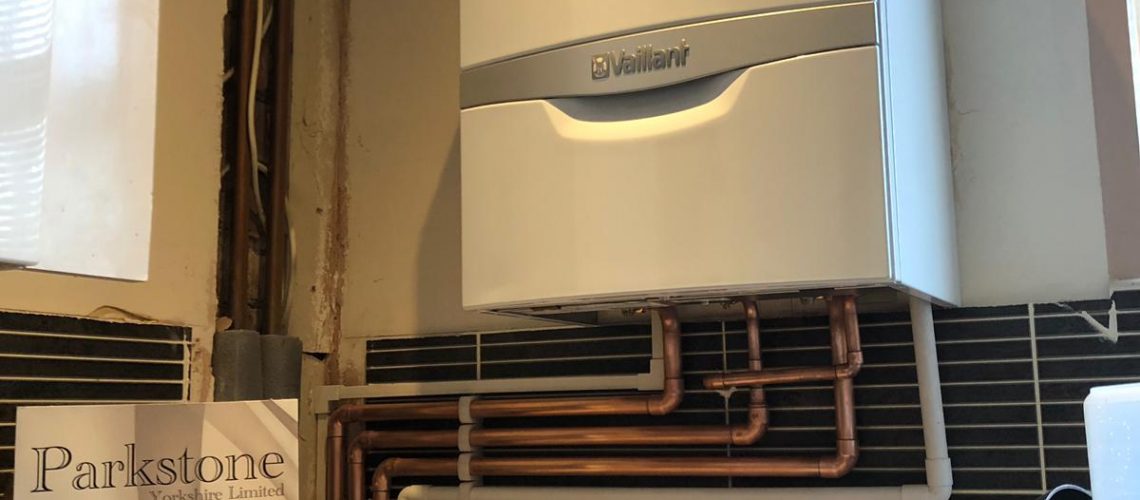Throughout the past 12 months, many projects we completed required a new boiler location. Some were necessary because of the boiler age, efficiency and capabilities. Others were design lead, where renovations on properties included significant heating upgrade work. There are several factors that contribute to the decision for a boiler location, so we thought we’d write a blog for guidance because your ideal boiler location may not be suitable.
The boiler location must be suitable for a condensing boiler.
First, you must install a condensing boiler. All boilers installed after 2005 had to meet specific regulations regarding efficiency. Modern boilers meet this efficiency target by condensing the flue gases before they leave the boiler. The condensing aspect of the boiler can cause installation issues. To summarise; condensing boilers extract more heat from the flue gases before discharging to the open air. This process ‘condenses’ the flue gases, forming water droplets within the boiler. The water collected from this process needs to discharge safely. So, a sump in the boiler discharges the water through a condensate pipe to an existing waste or drain pipe, or directly to a surface drain or ground soak away. This element of modern boilers is one reason a boiler may have to move location, to ensure the safe discharge of the flue gases and condensate water.
Why can’t the new boiler go where the old one is?
Well, it can, but only if it is a ‘like for like’ swap. It will come as no surprise that, like all household appliances, gas boilers do not last forever. At some point, the boiler will need updating. This may be a simple task of ‘one out and one in’, where the boiler location is acceptable (meeting all current regulations) and all the pipework is in place. However, for those of you with older boilers or ones where regulations have changed regarding their location, it can leave you with an expensive relocation job. For large home renovation projects, the boiler location must cope with any additional demands from heating and hot water requirements. For instance, longer pipe runs to new heating elements would present inefficiency issues, and thus a boiler relocation would be advised.
What type of flue/chimney does the existing boiler location use?
Key to any boiler move will be the flue or chimney used by the boiler. If the current boiler uses a flue that connects to a brick chimney, or a large vertical flue pipe, chances are it is an open flue boiler. This requires ventilation directly from outside, via a vent in the wall, external door or window. We recommend that you upgrade these boilers to a room sealed flue system. If you have any queries about your flue and would like some expert advice, please call us on 01132250793
The modern boiler in most cases uses a room-sealed fan-assisted flue system. These are the safest type of flue as all aspects of the discharge process remains sealed away from the air we breathe in the home. These flue systems do not need air vents to supply air for combustion unlike open flued appliances (some modern boilers require ventilation for cooling if installed in a cupboard – always check the Manufacturer’s Instructions). Also, the flue kits available can run many metres, including vertically. This helps where it is difficult to find a suitable termination point outside.
Follow the manufacturers instructions!
To finish this blog, a new boiler installation must follow the manufacturer’s instructions. Their testing procedure for boilers will determine where and how to install their boiler. As proud registered installers of Vaillant Boilers, we always follow their instructions first.
For more information or if you want a quote for a new boiler, please get in touch.

